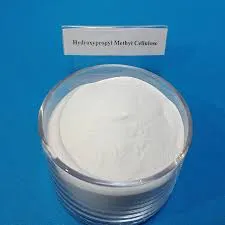
Dec . 03, 2024 16:56 Back to list
hpmc polymer
HPMC Polymer An Overview of Its Properties and Applications
Hydroxypropyl Methylcellulose (HPMC) is a widely used polymer derived from cellulose, a natural polymer obtained from plant cell walls. With its unique chemical structure, HPMC has gained significant popularity in various industries due to its versatile properties, including thickening, emulsifying, and film-forming capabilities. This article delves into the characteristics of HPMC, its applications across different industries, and its environmental impact.
Properties of HPMC
HPMC is a white, odorless powder that is soluble in cold water and forms a clear, viscous solution. It is classified as a non-ionic cellulose ether, which means it does not carry a charge and is stable across a wide range of pH levels. One of the notable properties of HPMC is its ability to form a gel-like consistency when heated and subsequently cooled. This property makes it an excellent choice for various applications where a stable gel or thickened solution is required.
Another significant feature of HPMC is its thermal sensitivity, which allows it to function effectively in temperature-modulated environments. Its viscosity can be influenced by the concentration of the polymer in the solution, the temperature, and the shear rate, enabling formulation flexibility. Additionally, HPMC exhibits excellent bio-compatibility, making it suitable for applications involving direct contact with biological tissues.
Industrial Applications
1. Pharmaceutical Industry HPMC is extensively used in drug formulations as a binding agent, controlled-release agent, and emulsifier. Its ability to form viscous solutions makes it an ideal candidate for solutions and suspensions where uniformity is crucial. HPMC is often incorporated into tablets and capsules to improve their mechanical strength and controlled release rates.
2. Food Industry In the food sector, HPMC serves as a thickening agent and stabilizer. It is commonly found in gluten-free products, sauces, dressings, and ice creams. Its ability to retain moisture enhances the texture and mouthfeel of these food items, contributing to improved sensory attributes.
hpmc polymer

3. Construction Industry HPMC is used as an additive in cement-based products to improve workability and prolong the open time of mortars and plasters. Its water-retaining properties aid in preventing early drying, allowing sufficient time for the application to set properly.
4. Cosmetics and Personal Care In the cosmetics industry, HPMC is employed as a thickener, film former, and stabilizer in products ranging from lotions to shampoos. Its gentle nature makes it suitable for sensitive skin formulations, while its film-forming capabilities provide a smooth application experience.
5. Agriculture HPMC is also utilized in agricultural applications as a binder in pesticide and herbicide formulations. Its ability to enhance the adhesion of active ingredients on plant surfaces increases the efficiency of these agricultural chemicals.
Environmental Impact
One of the advantages of HPMC is that it is derived from cellulose, which is renewable and biodegradable. As environmental concerns grow, the demand for sustainable materials has increased, making HPMC an attractive option compared to synthetic polymers that may have adverse environmental effects. Additionally, HPMC's biodegradability reduces the persistence of waste in landfills, contributing to a lower environmental footprint.
Conclusion
HPMC is a remarkable polymer with a wide array of applications across multiple industries due to its unique properties. Its versatility as a thickener, emulsifier, and stabilizer makes it indispensable in pharmaceuticals, food, construction, cosmetics, and agriculture. Furthermore, its renewable nature and biodegradability position HPMC as a sustainable alternative in an era increasingly focused on environmental stewardship. As research continues and industries evolve, the potential applications and innovations surrounding HPMC will likely expand, reaffirming its essential role in various sectors.
-
Versatile Hpmc Uses in Different Industries
NewsJun.19,2025
-
Redispersible Powder's Role in Enhancing Durability of Construction Products
NewsJun.19,2025
-
Hydroxyethyl Cellulose Applications Driving Green Industrial Processes
NewsJun.19,2025
-
Exploring Different Redispersible Polymer Powder
NewsJun.19,2025
-
Choosing the Right Mortar Bonding Agent
NewsJun.19,2025
-
Applications and Significance of China Hpmc in Modern Industries
NewsJun.19,2025







